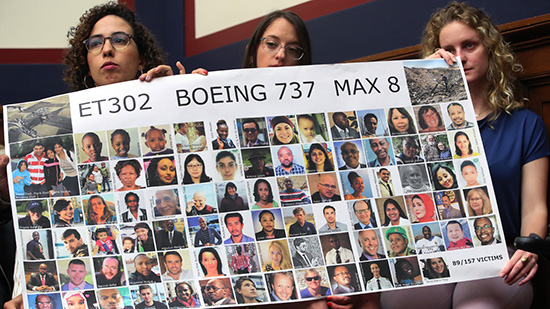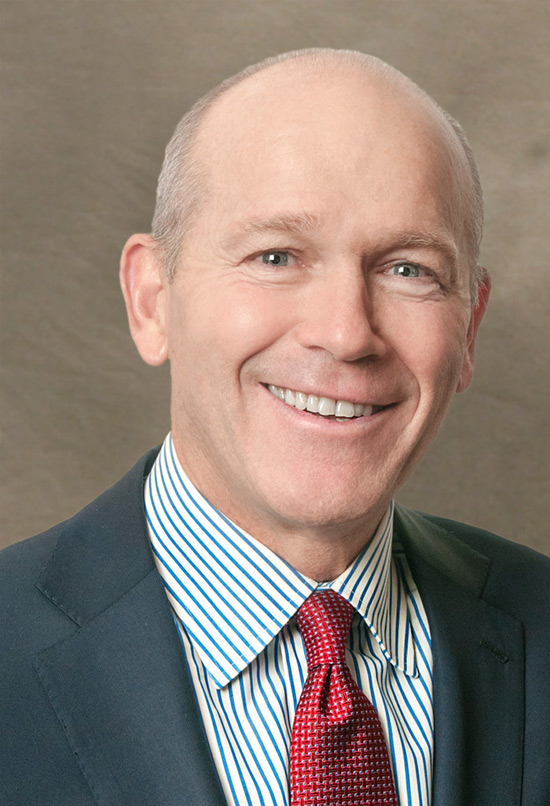
從1月13日起,大衛·卡爾霍恩將履新波音首席執行官一職,成為該公司在短短不到五年時間內的第四任首席執行官。
卡爾霍恩有著豐富的工作經驗,在加入波音前曾供職于不同行業的多家知名公司,擁有輝煌的職業生涯,曾在黑石集團、卡特彼勒和尼爾森控股等公司擔任高管。
熟識卡爾霍恩的人對他的評價很高,在他們眼中,卡爾霍恩既是一位圓融的管理者,擅于平衡盈虧,又是 “救火隊長”一般的人物。而現在,要想將這家麻煩纏身的美國企業拖出泥潭,卡爾霍恩將不得不充分發揮自己的這兩種能力。
美國財政部部長史蒂夫·姆努欽在1月12日接受福克斯新聞采訪時表示:“作為美國最大的出口商之一,波音的問題將毫無疑問地拖累美國的GDP,波音737 Max飛機停飛或將導致今年GDP降低50個基點。”此番言論也適時地提醒了人們,波音要想扭轉局面難度何其大。
可以說,卡爾霍恩接手的是波音公司乃至現代商業史上最大的爛攤子。圣誕前夕,波音的董事會要求卡爾霍恩擔任公司新任掌門,并帶領這家經歷了獅航和埃航兩起空難(共造成346人喪生)的航空及國防巨頭走出困境,而怎么看這都像是個無法完成的任務。
要想完成使命,他必須重獲投資者、供應商、消費者和雇員的信任,修復與監管機構之間的關系,同時改變自以為是的企業文化。從近期公開的內部員工間信息可以清楚看出,這種企業文化已經在管理層和員工之間造成了裂痕,在公開的信息里,波音 737 MAX的設計師被稱為“小丑”,而公司的主管則被稱為“猴子”。此外,他還必須完成前任首席執行官丹尼斯·米倫伯格未能完成的使命——讓波音 737 MAX復飛。
留給他的時間不多了。
卡爾霍恩需要盡快取得進展,一方面是因為資金消耗巨大,僅2019年第三季度,波音就消耗了41億美元現金,另一方面,各方面對波音公司也越來越沒有耐心。他將成為整個商界最為關注的人物之一,而且無論他是否愿意,在未來很長的一段時間內,他都將會出現在許多商學院的案例研究之中。

局內人做局外人的工作
有人認為,由于卡爾霍恩在波音董事會任職已經有10年之久,而且波音 737 MAX飛機正是在其監管下發生嚴重問題,因而他并不是新任首席執行官的最佳人選。也有批評聲音認為,卡爾霍恩此前從未擔任過飛機制造公司的負責人,也不像大多數波音的掌門人一樣擁有工程背景。
耶魯大學管理學院資深副院長、萊斯特克朗教授(管理實踐)杰弗里·索恩菲爾德并不認可這一觀點,他說:“卡爾霍恩在公司內外都享有盛譽,各方面都對他青睞有加。他與華爾街和工程界保持著極好的關系,在通用電氣負責飛機相關業務時積累下的權威現在依然有用。”
卡爾霍恩在處理企業危機方面也具有豐富的經驗,2017年,在他擔任卡特彼勒董事長期間,曾經成功應對過多個聯邦機構對該公司展開的稅收欺詐突襲調查。
雖然不是工程師,但卡爾霍恩曾在通用電氣公司任職達26年之久,曾負責通用電氣的飛機發動機和運輸(飛機和鐵路)部門。卡內基梅隆大學的工程與公共政策教授杰伊·艾普特表示,工程背景并不一定是幫助波音公司逆轉局勢的關鍵。
“波音737 MAX出現軟件問題時,整個組織都是工程師們在負責。”艾普特表示。“波音真正需要的是一種安全文化。創建這種文化需要的是認真對待安全問題的領導人,而不一定要有工程背景。董事會、首席執行官和首席風險官都必須全心投入安全文化的創建之中,他們需要明確表示:‘時間表很重要,但沒有安全,公司將萬劫不復。’”
卡爾霍恩的另一個優勢是他對公司的了解,波音是一家擁有13萬員工的龐大公司,從未在波音工作過的外部人士難免會缺乏對公司運營情況和企業文化的了解。索恩菲爾德說:“即便人選合適,外人要想勝任首席執行官的工作也得花費18個月的時間來學習。”而卡爾霍恩則是知己知彼,同時也得到了波音董事長、美國大陸航空前負責人勞倫斯·凱爾納和首席財務官格雷格·史密斯的支持(史密斯在過去三周中擔任臨時首席執行官)。索恩菲爾德表示,這種支持至關重要,他還將卡爾霍恩稱為“老波音優秀文化的傳承者”。
對于一直在燒錢的波音而言,時間至關重要。在2019年的前9個月中,波音的經營現金流為負的2.26億美元,而2018年的同期數字為124億美元。據報道,波音欲進行50億美元債務融資,以彌補成本。
上市公司高管業績分析機構Management CV發布的一份客戶報告指出,“經營現金流的突然下降導致公司杠桿大幅提升,或將破壞其與供應商的關系。”
財務問題出在商用飛機部門,而該部門的收入占波音總收入的60%以上。截至目前,波音仍然在竭力避免裁員行動。然而,在波音 737 MAX復飛前,如果不采取類似的激進措施,波音將無法堵上財務窟窿。
現金流并不是波音面臨的唯一問題。Tigress Financial Partners是一家為大型投資者提供咨詢的公司,同時也為客戶持有部分波音公司股票,其首席投資官兼研究總監伊萬·費恩塞斯認為,波音公司需要拿出計劃,讓波音 737 MAX能夠最遲在初夏實現復飛。
重建信任
波音 737 MAX復飛、重建信任都絕非易事。波音與美國聯邦航空管理局(FAA)和全球其他監管機構的關系已經破裂。Fox Rothschild的航空法律業務合伙人兼聯席主席馬克·多姆羅夫表示:“波音的首要任務是恢復其與監管機構的關系。”
他指出,最近公布的波音內部電子郵件內容令人憤怒,從這些郵件可以看出波音藐視監管的態度。“某種程度上說,有些郵件的內容可能被解讀為對FAA監管的嘲弄。”
這顯然不是波音第一次藐視監管機構。彼得·戈爾茲說:“波音對我們的態度一直很強硬。”彼得·戈爾茲目前是政府和公共關系公司O'Neill and Associates的高級副總裁,曾于1996年至2000年間擔任美國國家運輸安全委員會(NTSB)的董事總經理。20世紀90年代,NTSB曾處理過兩起波音737墜毀事故,其中涉及方向舵動力控制單元故障,在某些情況下,該故障會使方向舵轉向與飛行員意圖相背,跟現在出現的問題在很多方面都頗為相似。戈爾茲表示:“直到最后一刻,波音都在想方設法阻撓我們的工作。”
現在,波音737 MAX能否復飛、何時復飛都由FAA決定。因而修復雙方關系對波音而言至關重要。重新建立他人對波音飛機性能的信任也是如此。波音 737 MAX飛機停飛,急需的新飛機也遲遲無法交付,讓全球的航空公司都深受困擾,企業運營也受到不利影響。例如,美國航空集團便將波音訴至法庭,要求賠償(該航空公司表示,波音737 MAX飛機停飛令其2019年的稅前利潤損失達5.4億美元),最終雙方達成部分和解。
飛機停飛也對消費者造成了不利影響。有些航空公司不得不取消了原本可由波音 737 MAX執飛的一些航班。也有航空公司不得不削減成本和/或提高票價。此外,航空旅客對再次搭乘波音737 MAX也深感不安。
還有波音的數千家供應商。
投資銀行公司Cassel Salpeter&Co.的航空業務主管約瑟夫·史密斯表示:“波音對供應商通常極為強硬。”波音737 MAX飛機的停飛、停產讓許多供應商苦不堪言。波音最大的供應商Spirit AeroSystems Holdings剛剛裁員20%,多達2800名工人。
卡爾霍恩必須在有限的時間內同時解決上述所有問題。索恩菲爾德將卡爾霍恩面臨的任務稱為“英雄般的使命”。
開工大吉。(財富中文網)
譯者:梁宇
審校:夏林
從1月13日起,大衛·卡爾霍恩將履新波音首席執行官一職,成為該公司在短短不到五年時間內的第四任首席執行官。
卡爾霍恩有著豐富的工作經驗,在加入波音前曾供職于不同行業的多家知名公司,擁有輝煌的職業生涯,曾在黑石集團、卡特彼勒和尼爾森控股等公司擔任高管。
熟識卡爾霍恩的人對他的評價很高,在他們眼中,卡爾霍恩既是一位圓融的管理者,擅于平衡盈虧,又是 “救火隊長”一般的人物。而現在,要想將這家麻煩纏身的美國企業拖出泥潭,卡爾霍恩將不得不充分發揮自己的這兩種能力。
美國財政部部長史蒂夫·姆努欽在1月12日接受福克斯新聞采訪時表示:“作為美國最大的出口商之一,波音的問題將毫無疑問地拖累美國的GDP,波音737 Max飛機停飛或將導致今年GDP降低50個基點。”此番言論也適時地提醒了人們,波音要想扭轉局面難度何其大。
可以說,卡爾霍恩接手的是波音公司乃至現代商業史上最大的爛攤子。圣誕前夕,波音的董事會要求卡爾霍恩擔任公司新任掌門,并帶領這家經歷了獅航和埃航兩起空難(共造成346人喪生)的航空及國防巨頭走出困境,而怎么看這都像是個無法完成的任務。
要想完成使命,他必須重獲投資者、供應商、消費者和雇員的信任,修復與監管機構之間的關系,同時改變自以為是的企業文化。從近期公開的內部員工間信息可以清楚看出,這種企業文化已經在管理層和員工之間造成了裂痕,在公開的信息里,波音 737 MAX的設計師被稱為“小丑”,而公司的主管則被稱為“猴子”。此外,他還必須完成前任首席執行官丹尼斯·米倫伯格未能完成的使命——讓波音 737 MAX復飛。
留給他的時間不多了。
卡爾霍恩需要盡快取得進展,一方面是因為資金消耗巨大,僅2019年第三季度,波音就消耗了41億美元現金,另一方面,各方面對波音公司也越來越沒有耐心。他將成為整個商界最為關注的人物之一,而且無論他是否愿意,在未來很長的一段時間內,他都將會出現在許多商學院的案例研究之中。
局內人做局外人的工作
有人認為,由于卡爾霍恩在波音董事會任職已經有10年之久,而且波音 737 MAX飛機正是在其監管下發生嚴重問題,因而他并不是新任首席執行官的最佳人選。也有批評聲音認為,卡爾霍恩此前從未擔任過飛機制造公司的負責人,也不像大多數波音的掌門人一樣擁有工程背景。
耶魯大學管理學院資深副院長、萊斯特克朗教授(管理實踐)杰弗里·索恩菲爾德并不認可這一觀點,他說:“卡爾霍恩在公司內外都享有盛譽,各方面都對他青睞有加。他與華爾街和工程界保持著極好的關系,在通用電氣負責飛機相關業務時積累下的權威現在依然有用。”
卡爾霍恩在處理企業危機方面也具有豐富的經驗,2017年,在他擔任卡特彼勒董事長期間,曾經成功應對過多個聯邦機構對該公司展開的稅收欺詐突襲調查。
雖然不是工程師,但卡爾霍恩曾在通用電氣公司任職達26年之久,曾負責通用電氣的飛機發動機和運輸(飛機和鐵路)部門。卡內基梅隆大學的工程與公共政策教授杰伊·艾普特表示,工程背景并不一定是幫助波音公司逆轉局勢的關鍵。
“波音737 MAX出現軟件問題時,整個組織都是工程師們在負責。”艾普特表示。“波音真正需要的是一種安全文化。創建這種文化需要的是認真對待安全問題的領導人,而不一定要有工程背景。董事會、首席執行官和首席風險官都必須全心投入安全文化的創建之中,他們需要明確表示:‘時間表很重要,但沒有安全,公司將萬劫不復。’”
卡爾霍恩的另一個優勢是他對公司的了解,波音是一家擁有13萬員工的龐大公司,從未在波音工作過的外部人士難免會缺乏對公司運營情況和企業文化的了解。索恩菲爾德說:“即便人選合適,外人要想勝任首席執行官的工作也得花費18個月的時間來學習。”而卡爾霍恩則是知己知彼,同時也得到了波音董事長、美國大陸航空前負責人勞倫斯·凱爾納和首席財務官格雷格·史密斯的支持(史密斯在過去三周中擔任臨時首席執行官)。索恩菲爾德表示,這種支持至關重要,他還將卡爾霍恩稱為“老波音優秀文化的傳承者”。
對于一直在燒錢的波音而言,時間至關重要。在2019年的前9個月中,波音的經營現金流為負的2.26億美元,而2018年的同期數字為124億美元。據報道,波音欲進行50億美元債務融資,以彌補成本。
上市公司高管業績分析機構Management CV發布的一份客戶報告指出,“經營現金流的突然下降導致公司杠桿大幅提升,或將破壞其與供應商的關系。”
財務問題出在商用飛機部門,而該部門的收入占波音總收入的60%以上。截至目前,波音仍然在竭力避免裁員行動。然而,在波音 737 MAX復飛前,如果不采取類似的激進措施,波音將無法堵上財務窟窿。
現金流并不是波音面臨的唯一問題。Tigress Financial Partners是一家為大型投資者提供咨詢的公司,同時也為客戶持有部分波音公司股票,其首席投資官兼研究總監伊萬·費恩塞斯認為,波音公司需要拿出計劃,讓波音 737 MAX能夠最遲在初夏實現復飛。
重建信任
波音 737 MAX復飛、重建信任都絕非易事。波音與美國聯邦航空管理局(FAA)和全球其他監管機構的關系已經破裂。Fox Rothschild的航空法律業務合伙人兼聯席主席馬克·多姆羅夫表示:“波音的首要任務是恢復其與監管機構的關系。”
他指出,最近公布的波音內部電子郵件內容令人憤怒,從這些郵件可以看出波音藐視監管的態度。“某種程度上說,有些郵件的內容可能被解讀為對FAA監管的嘲弄。”
這顯然不是波音第一次藐視監管機構。彼得·戈爾茲說:“波音對我們的態度一直很強硬。”彼得·戈爾茲目前是政府和公共關系公司O'Neill and Associates的高級副總裁,曾于1996年至2000年間擔任美國國家運輸安全委員會(NTSB)的董事總經理。20世紀90年代,NTSB曾處理過兩起波音737墜毀事故,其中涉及方向舵動力控制單元故障,在某些情況下,該故障會使方向舵轉向與飛行員意圖相背,跟現在出現的問題在很多方面都頗為相似。戈爾茲表示:“直到最后一刻,波音都在想方設法阻撓我們的工作。”
現在,波音737 MAX能否復飛、何時復飛都由FAA決定。因而修復雙方關系對波音而言至關重要。重新建立他人對波音飛機性能的信任也是如此。波音 737 MAX飛機停飛,急需的新飛機也遲遲無法交付,讓全球的航空公司都深受困擾,企業運營也受到不利影響。例如,美國航空集團便將波音訴至法庭,要求賠償(該航空公司表示,波音737 MAX飛機停飛令其2019年的稅前利潤損失達5.4億美元),最終雙方達成部分和解。
飛機停飛也對消費者造成了不利影響。有些航空公司不得不取消了原本可由波音 737 MAX執飛的一些航班。也有航空公司不得不削減成本和/或提高票價。此外,航空旅客對再次搭乘波音737 MAX也深感不安。
還有波音的數千家供應商。
投資銀行公司Cassel Salpeter&Co.的航空業務主管約瑟夫·史密斯表示:“波音對供應商通常極為強硬。”波音737 MAX飛機的停飛、停產讓許多供應商苦不堪言。波音最大的供應商Spirit AeroSystems Holdings剛剛裁員20%,多達2800名工人。
卡爾霍恩必須在有限的時間內同時解決上述所有問題。索恩菲爾德將卡爾霍恩面臨的任務稱為“英雄般的使命”。
開工大吉。(財富中文網)
譯者:梁宇
審校:夏林
Beginning from January 13, David Calhoun steps into the cockpit as CEO of Boeing, the company’s fourth chief executive in just under five years.
Calhoun is highly seasoned. His path to Boeing follows a long and distinguished career at high-profile companies in multiple industries. He’s held top positions at Blackstone Group, Caterpillar and Nielsen Holdings, to name a few.
From those who know him well, Calhoun gets high marks as both a smooth operator, adept at making the numbers work, and as a kind of Mr. Fix-It. Calhoun will have to rely on both skills if he’s to right America’s most troubled company.
Just yesterday, Treasury Secretary Steve Mnuchin dropped a timely reminder of just how much is riding on Boeing’s turnaround. “There’s no question that the Boeing situation is going to slow down the GDP numbers,” Mnuchin said in a Fox News interview. “Boeing is one of the largest exporters, and with the 737 Max, I think that could impact GDP as much as 50 basis points this year.”
Calhoun is heir to one of the biggest messes, not only in the company’s history, but in modern business. Just before Christmas, the Boeing board asked him to step in and achieve a seemingly impossible metric: pilot the aviation and defense giant beyond the twin tragedies of the Lion Air and Ethiopian Airlines crashes that killed 346 people, and into less turbulent times.
To do so, he must regain the trust of investors, suppliers, consumers and employees. He has to repair relationships with regulators, fix the dysfunctional, we-know-best culture that's created a toxic rift between management and the workforce that was best summarized by a recently released internal employee message that referred to the 737 MAX designers as “clowns” and the company’s supervisors as “monkeys.” Oh, and he’s got to do what his predecessor, Dennis A. Muilenburg, couldn’t—get the 737 MAX back into the air.
He’s under a huge time constraint, too.
Calhoun needs quick progress because of a major cash burn—the company had a cash burn of $4.1 billion in the third quarter—and growing impatience with the company on all sides. He is about to become one of the most scrutinized figures in business, and one who will likely feature in many a b-school case study for a long time to come—whether he likes it or not.
Insider for an outsider’s job
Some suggest that Calhoun isn’t the best choice because of his 10 years on the Boeing board, which oversaw the MAX fiasco. There’s also criticism that he hasn’t run an aerospace company before, and lacks that most Boeing of pedigrees—an engineering background.
Jeffrey Sonnenfeld, senior associate dean for leadership studies and Lester Crown professor in the practice of management at Yale, disagrees. “He is universally admired within and outside the company in every critical constituency,” Sonnenfeld says. “He has a huge amount of good will in Wall Street and in the engineering world. He still comes at it with all the authority of his GE aerospace days.”
Calhoun also has deep experience in managing corporate crises, such as during his time as chairman of Caterpillar when multiple federal agencies raided the company over claims of tax fraud in 2017.
Although not an engineer, during a 26-year tenure at GE, Calhoun ran the company’s aircraft engines and transportation (aircraft and rail) divisions. Jay Apt, a professor of engineering and public policy at Carnegie Mellon University, says that an engineering background isn’t necessarily key to success at Boeing.
“Engineers throughout the organization were in charge during the 737 MAX software issues,” Apt says. “What one really needs is a safety culture. That safety culture can be led by someone who is seriously committed by safety, whether they are an engineer or not. It requires complete commitment from the board, the CEO, and the chief risk officers to say, ‘Schedules are important but [a lack of] safety can kill the company.’”
Another advantage of Calhoun is that a full outsider would lack knowledge of the operations and culture of a sprawling company that employs over 130,000. “The learning curve is 18 months for an outsider to master the [CEO] job, and that’s if you pick the right person,” Sonnenfeld says. Calhoun is a known quantity and has support from Boeing chairman Lawrence Kellner—a former head of Continental Airlines—and CFO Greg Smith (Smith served as interim CEO over the past three weeks). That backing is vital, Sonnenfeld says, calling Calhoun “a culture carrier of the best of the old Boeing.”
Time is of the essence for the company, which is burning through cash. In the first nine months of 2019, Boeing had a negative operating cash flow of (negative) -$226 million, compared to $12.4 billion in the same period of 2018. Boeing is reportedly looking to raise as much as $5 billion in debt to cover costs.
The “sudden drop in the firm’s operating cash flows [is] causing the firm to take on significantly more leverage and potentially disrupt its relationships with suppliers,” according to a client note from Management CV, which analyzes senior management performance at public companies.
The financial problems are in the commercial aircraft division, source of more than 60% of the company’s overall revenues. Until the MAX begins flying again, the financial shortcoming will be impossible to fix without drastic steps like layoffs, which so far have been avoided.
Cash flow isn’t the only issue. Ivan Feinseth, chief investor officer and director of research at Tigress Financial Partners, which advises large investors and also holds some Boeing stock for clients, thinks that by next month the company needs to show a plan to get the MAX back in the air by early summer at the latest.
Bridging the trust gap??
Getting the MAX airborne and restoring a sense of trust with others will be difficult. Relations with the Federal Aviation Administration and other regulator bodies around the world have been fractured. “The number one priority Boeing had was to repair its relationship with its regulator,” says Mark Dombroff, partner and co-chair of the aviation law practice at Fox Rothschild.
He noted the recent damning batch of internal Boeing emails that indicate Boeing was above regulatory scrutiny. “Some of these emails, to the extent one interprets them that way, are commenting on the FAA oversight.”
It wouldn’t be a first time that Boeing was truculent with a regulatory body. “We had a very tough relationship with them,” says Peter Goelz, currently a senior vice president of government and public relations firm O’Neill and Associates and a former managing director of the National Transportation Safety Board from 1996 to 2000. The NTSB dealt with two crashes of Boeing 737s in the 1990s that involved a malfunctioning rudder power control unit that, under certain circumstances, would force the rudder in the direction opposite to what the pilots wanted, a situation in many ways similar to the current one. “They battled us right up until the end,” Goelz says.
The FAA now controls whether and when the MAX returns to the air. Repairing that relationship is critical. So is regaining trust with everyone else involved with the plane’s performance. Airline customers the world over have been burned by having to ground MAX planes or hold off on delivery of new planes that they badly needed, messing with business operations. American Airlines Group, for one, fought Boeing in the courts for damages (the airline says the MAX grounding shaved $540 million from its 2019 pretax profits), before reaching a partial settlement.
The shutdown is impacting consumers, too. Some airlines have had to stop flying to certain destinations that would have been serviced by the MAX. Others are having to cut costs and/or boost ticket prices. And, the flying public is leery of ever boarding a MAX again.
Then there are Boeing’s thousands of vendors.
“Boeing typically is super-duper tough with their suppliers,” says Joseph Smith, aviation director at investment banking firm Cassel Salpeter & Co. As the MAX grounding has stopped production, a host of vendors are feeling the pain. Boeing’s biggest supplier, Spirit AeroSystems Holdings, just laid off 2,800 workers, or 20% of the workforce.
Calhoun has to address all these problems at the same time and under a tight deadline. Sonnenfeld calls the task facing Calhoun an “heroic quest.”
Welcome to your first day on the job.






